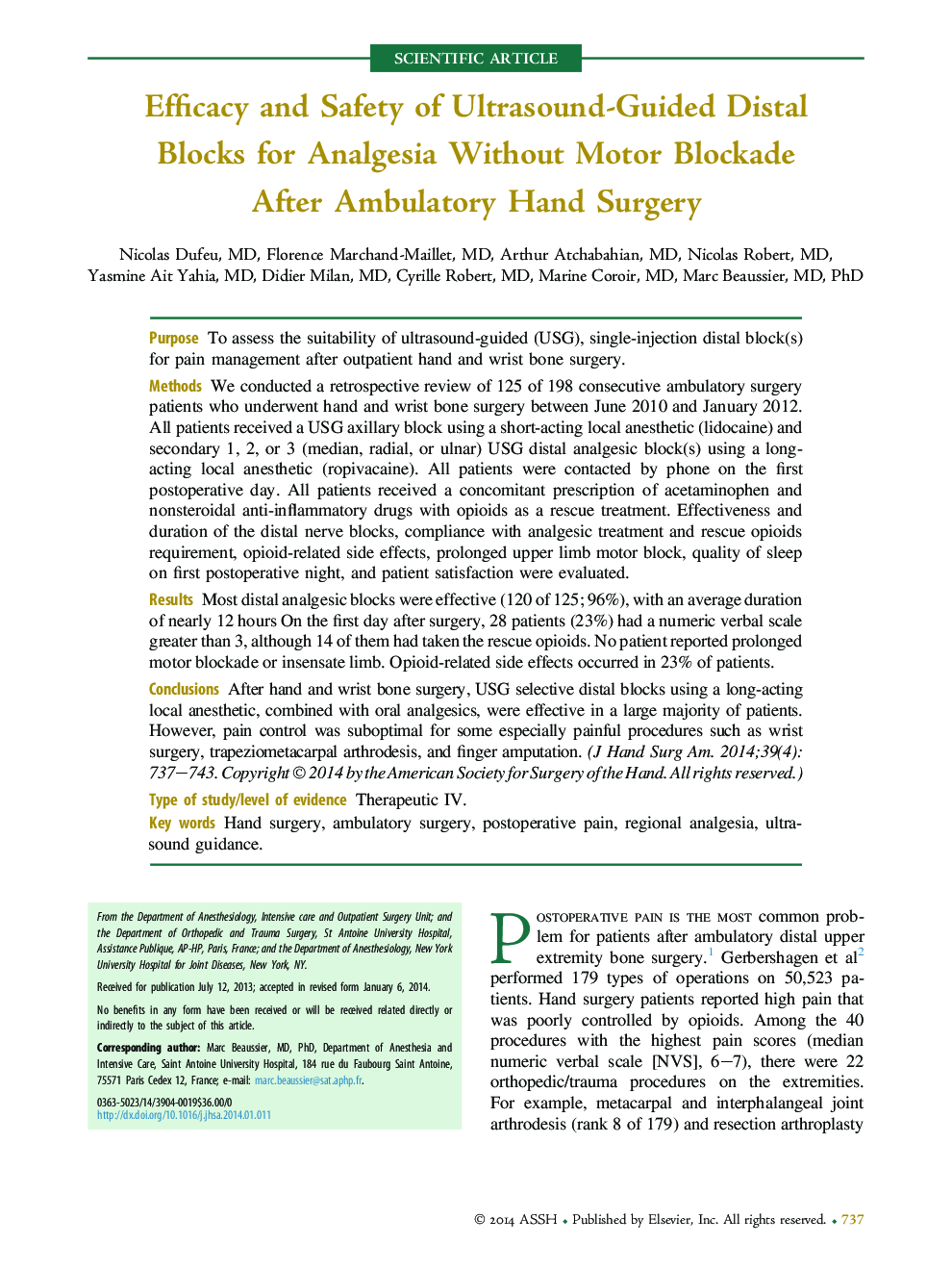| کد مقاله | کد نشریه | سال انتشار | مقاله انگلیسی | نسخه تمام متن |
|---|---|---|---|---|
| 4067687 | 1604371 | 2014 | 7 صفحه PDF | دانلود رایگان |
PurposeTo assess the suitability of ultrasound-guided (USG), single-injection distal block(s) for pain management after outpatient hand and wrist bone surgery.MethodsWe conducted a retrospective review of 125 of 198 consecutive ambulatory surgery patients who underwent hand and wrist bone surgery between June 2010 and January 2012. All patients received a USG axillary block using a short-acting local anesthetic (lidocaine) and secondary 1, 2, or 3 (median, radial, or ulnar) USG distal analgesic block(s) using a long-acting local anesthetic (ropivacaine). All patients were contacted by phone on the first postoperative day. All patients received a concomitant prescription of acetaminophen and nonsteroidal anti-inflammatory drugs with opioids as a rescue treatment. Effectiveness and duration of the distal nerve blocks, compliance with analgesic treatment and rescue opioids requirement, opioid-related side effects, prolonged upper limb motor block, quality of sleep on first postoperative night, and patient satisfaction were evaluated.ResultsMost distal analgesic blocks were effective (120 of 125; 96%), with an average duration of nearly 12 hours On the first day after surgery, 28 patients (23%) had a numeric verbal scale greater than 3, although 14 of them had taken the rescue opioids. No patient reported prolonged motor blockade or insensate limb. Opioid-related side effects occurred in 23% of patients.ConclusionsAfter hand and wrist bone surgery, USG selective distal blocks using a long-acting local anesthetic, combined with oral analgesics, were effective in a large majority of patients. However, pain control was suboptimal for some especially painful procedures such as wrist surgery, trapeziometacarpal arthrodesis, and finger amputation.Type of study/level of evidenceTherapeutic IV.
Journal: The Journal of Hand Surgery - Volume 39, Issue 4, April 2014, Pages 737–743
